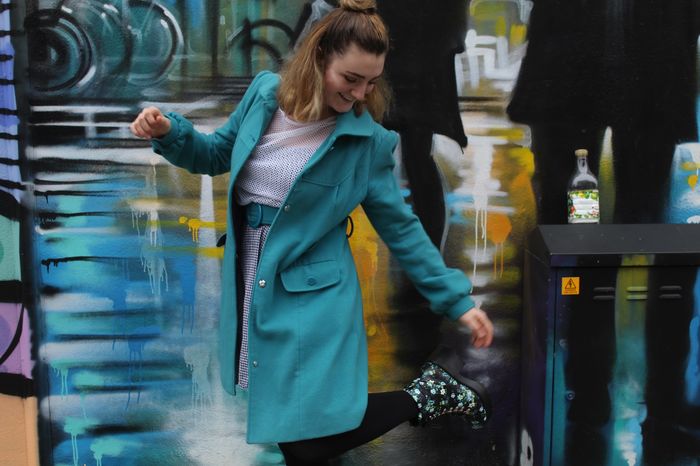Notes on womanhood: why I wear red
Zoe Blackburn reflects on the oppressive legacy of uniform rules

My body was policed before I understood why. A bra strap was showing. Boys would be “distracted”, that wondrously blame-effacing word. I had, my parents’ friends assured me, “filled out” at the grand age of fourteen, and suddenly wearing clingy fabrics felt scandalous.
“Don’t you dare ignore me. I’m dangerously loud”
Schools up and down the country are regularly (and justifiably) criticised for blaming clothes for the sexual assault and harassment those wearing them experience. There’s a quiet rage you feel when you get shouted at from a bike at 10am whilst wearing an oversized jumper because at that moment what you knew from the beginning is once again proved right: it truly had nothing to do with what you were wearing.
However, there’s a separate issue with the way girls’ bodies are controlled within the school system. Underlying this game of modesty and exposure, there’s a subliminal layer of messaging that lurks beneath the muted colours and knee length pleated skirts. Don’t stand out. Don’t show off. Don’t be too loud. Accompanying this compliance, you adopt a sense of shame. If you draw attention to yourself, you’ll be punished. That was what those unremarkable, neatly printed rules really seemed to say. Stop drawing attention to yourself.

At fourteen I remember being five foot nine and knowing that I couldn’t help but stand out, quite literally, from the crowd. But when you enter university or the workplace, the big wide world, you soon discover that succeeding relies, in a very real and quantifiable way, on just that. Standing out. Against hundreds of job applicants. Against hundreds of frantically referenced dissertations. Blending into the background hardly sets you up for career success.
"Far too often we mistake originality, creativity, confidence and frankly a sense of fun for a flaw in somebody. Especially in women"
Six years later, I wear red. It’s the dominant colour in my wardrobe and the theme of my twenty-first birthday party. It’s not a totally mindless assimilation of old Hollywood nostalgia, the Taylor Swift album “Red” and the “pop of red” microtrend that’s been floating around Instagram lately. I suppose I’m trying to send the opposite message when I walk in the room as I did when I was unequivocally a “girl”. Don’t you dare ignore me. I’m dangerously loud. I’m still five foot nine to this day, but the two inch heels that are practically glued to my feet at all times mean that most of my friends believe I’m five eleven.

Now, I’m not saying you should go out of your way to stand out if you don’t want to - it can be comforting, community-building even, to feel like you “fit in” with your friends, family or even your favourite Gilmore Girls character. It can often be isolating, disorientating and frightening to lean into something that makes you different. But far too often we mistake originality, creativity, confidence and frankly a sense of fun for a flaw in somebody. Especially in women. The fact that we’re discouraging those things in girls as young as eleven on a national scale surely amounts to some kind of crisis.
How surprising is it that we’re struggling to interest girls in fields dominated at all levels by men? When the first step, literally, involves stepping into a classroom where they will feel different until the numbers are evened out? Factor in other points of difference from class to race to gender identity and it becomes painfully clear why change is so slow.
Fashion has been pigeon-holed as a frivolous vanity project, the self-centred pursuit of bored humanities students. You care too much what people think of you, you’re materialistic, you’re trying to get attention. But schools and universities need to pay attention to fashion. Fashion can be a powerful tool that allows us to articulate who we are without saying a word. Taking up space, being passionately creative, being whatever the opposite of innocently obedient is, are all important parts of making the transition from girlhood to womanhood. So if you see me on Sidge in a red scarf and garishly tartan mini skirt, it’s because I want you to. I’m not trying to blend in.
 Comment / Plastic pubs: the problem with Cambridge alehouses 5 January 2026
Comment / Plastic pubs: the problem with Cambridge alehouses 5 January 2026 News / Cambridge businesses concerned infrastructure delays will hurt growth5 January 2026
News / Cambridge businesses concerned infrastructure delays will hurt growth5 January 2026 News / New movement ‘Cambridge is Chopped’ launched to fight against hate crime7 January 2026
News / New movement ‘Cambridge is Chopped’ launched to fight against hate crime7 January 2026 News / Uni-linked firms rank among Cambridgeshire’s largest7 January 2026
News / Uni-linked firms rank among Cambridgeshire’s largest7 January 2026 News / AstraZeneca sues for £32 million over faulty construction at Cambridge Campus31 December 2025
News / AstraZeneca sues for £32 million over faulty construction at Cambridge Campus31 December 2025










